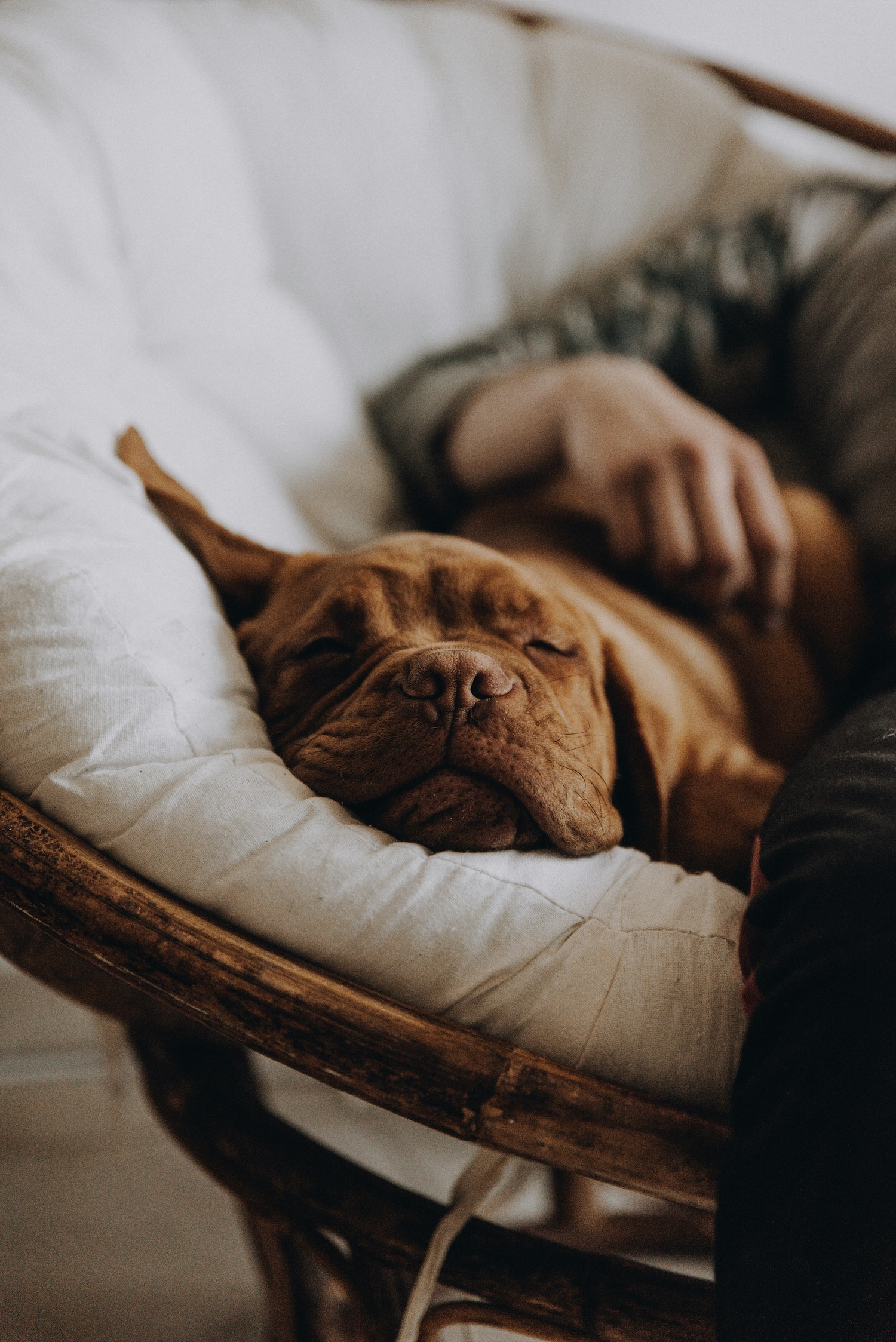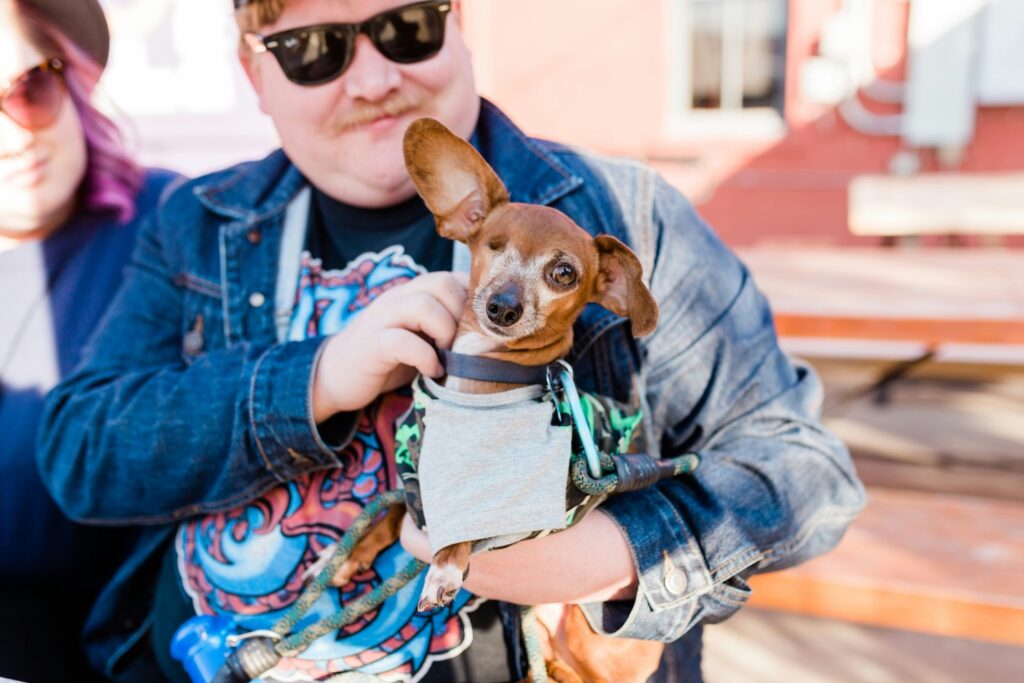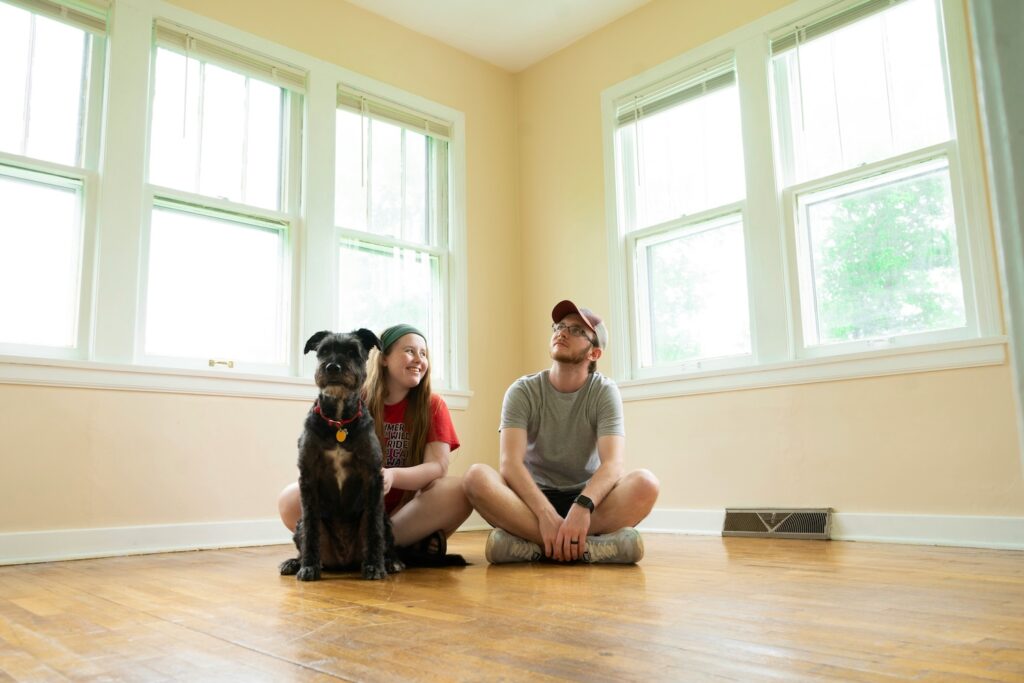You know that feeling when you’ve been pushing through a busy week and suddenly everything feels harder? Your dog gets the same thing. They might seem restless when they should be settling, take longer to respond to familiar cues, or just not be quite themselves. The difference is, they can’t tell you they’re exhausted.
After years of diving deep into canine sleep research, I’ve discovered something that transformed how I approach training challenges, behaviour issues, and even health concerns: most problems start with poor sleep. Not inadequate exercise, not the wrong diet, not even training methods. Sleep. It’s the foundation that everything else builds on, yet it’s the piece most Australian dog owners never think to examine.
The science is clear: sleep isn’t downtime for dogs. It’s when their brain consolidates learning, their immune system does its most critical work, and their body repairs the day’s wear and tear. Get this wrong, and you’re fighting an uphill battle with everything else.
The Hidden Architecture of Canine Rest
Your dog’s sleep looks nothing like yours, and understanding this difference is crucial for managing their wellbeing effectively.
While you consolidate rest into one long nighttime period, dogs are polyphasic sleepers – they take multiple shorter bouts of sleep and wakefulness across 24 hours. This isn’t a design flaw; it’s an evolutionary advantage that allowed their ancestors to rest while staying alert to threats and opportunities.
Here’s what this means for your household: a healthy adult dog spends about 50% of their day asleep, 30% awake but quietly relaxed, and only 20% in active behaviour like walking or playing. Their sleep cycles are much shorter than ours – about 45 minutes compared to our 70 to 120 minutes – which means they can get through several complete cycles even during a short nap.
The sleep itself has two main stages that serve distinct purposes. Non-Rapid Eye Movement (NREM) sleep is where the deepest physical restoration happens – tissue repair, immune system activation, and growth hormone release. REM sleep handles dreaming and memory consolidation. Unlike humans, dogs don’t experience complete muscle paralysis during REM sleep, which is why you’ll see them twitch, paddle their legs, or make soft vocalisations – they’re literally acting out their dreams.
What makes canine sleep particularly vulnerable is their inherited vigilance. Even while sleeping, their sensory systems remain more attuned to the environment than ours. A sound that barely registers to you might be enough to fragment their sleep cycle and trigger their alertness mechanisms. Each minor disturbance – the delivery truck, a door closing, the television – can interrupt a sleep cycle before your dog reaches the deep, restorative stages they desperately need.
Sleep Requirements: What Your Dog Actually Needs
Understanding age-specific needs helps set realistic expectations and guides care decisions. The amount of sleep your dog requires changes dramatically throughout their life:
Puppies (0-12 months) need 18 to 20 hours daily, essential for their explosive growth and development. This isn’t laziness – growth hormone is released predominantly during deep sleep, critical for building strong bones, muscles, and tissues. Their developing brains also use sleep time to process the enormous amount of new information they encounter daily, forming crucial neural connections.
Adult dogs (1-7 years) typically require 12 to 14 hours distributed across nighttime sleep and daytime naps. This can vary significantly based on individual factors. Larger breeds often need more sleep than smaller, energetic breeds due to higher metabolic costs. Working dogs or those with demanding exercise routines need additional rest to facilitate muscle recovery and repair.
Senior dogs (7+ years) need 14 to 20 hours but often experience more fragmented sleep patterns. They may sleep more during the day while becoming restless at night. This can be normal ageing, but it can also indicate underlying health issues like joint pain or cognitive dysfunction that disrupt normal sleep-wake cycles.
Reading the Signals: How Poor Sleep Shows Up
Most sleep problems in dogs don’t announce themselves with obvious insomnia. Instead, they show up as subtle behaviour changes that owners often misinterpret as training issues or personality quirks.
The paradox of the overtired dog is one of the most commonly missed signals. Logic suggests that a tired dog should be calm and lethargic, but many sleep-deprived dogs become hyperactive instead. They pace restlessly, bark excessively, or engage in destructive chewing. This isn’t defiance – it’s their brain’s attempt to compensate for fatigue, similar to an overtired toddler having a meltdown rather than falling asleep.
The signs progress from subtle to obvious:
Early indicators include frequent yawning when not tired, lip licking without food present, and an inability to settle in one spot. You might notice your dog constantly changing positions, avoiding eye contact, or seeming fidgety when they should be relaxed.
Behavioural changes become more pronounced over time. Sleep-deprived dogs often show increased irritability, snapping at familiar people or situations they normally tolerate. Their reactivity threshold drops significantly – they’ll bark at sounds they’d typically ignore or show exaggerated startle responses to minor stimuli. Poor impulse control becomes evident when they grab items they know are forbidden or struggle to wait for commands.
Cognitive impacts directly affect their ability to learn and remember. A dog struggling with training might not need more repetition; they might need better sleep to consolidate what they’re learning.
Physical manifestations include clumsiness, poor coordination, increased appetite, and daytime lethargy. If your normally coordinated dog starts tripping over their own feet or misjudging jumps, exhaustion might be the culprit.
The Train-Rest-Reinforce Method: Leveraging Sleep for Better Learning
One of the most practical applications of sleep science is revolutionising how we approach training. Instead of long, potentially exhausting sessions, a more neurologically effective approach involves what research supports as the “train-rest-reinforce” methodology:
- Short, focused training sessions where a new skill or command is introduced (10-15 minutes maximum)
- An immediate period of quiet rest or a nap, allowing the brain to enter NREM sleep and begin memory consolidation
- A subsequent session to reinforce and test the newly consolidated memory
This respects your dog’s natural cognitive rhythms. During sleep, particularly during NREM deep sleep, your dog’s brain literally replays neural patterns from the day’s experiences. Studies using EEG technology have identified “sleep spindles” – powerful bursts of brain activity lasting about half a second. Dogs showing more sleep spindles after training perform significantly better on subsequent tests.
The problem with many training challenges isn’t the method or your dog’s intelligence – it’s simply a lack of opportunity for their brain to do its essential consolidation work during sleep. A well-timed nap after learning can be more effective than pushing through additional repetitions with a fatigued brain.
Creating the Optimal Sleep Environment
Environmental management isn’t about luxury – it’s about supporting essential biological processes. Prioritising your efforts delivers the biggest impact:
Priority 1: Sound and Temperature Control
Sound management delivers the biggest impact for most households. Dogs’ inherited vigilance makes them particularly sensitive to auditory disturbances. A white noise machine or simple fan masks disruptive external sounds effectively, providing a consistent auditory backdrop that allows their brain to disengage vigilance mechanisms.
Temperature regulation comes next. Most dogs sleep best between 15°C and 25°C, though this varies by breed, coat thickness, and individual preference. Rather than fixating on specific numbers, observe behaviour: panting and restlessness suggest overheating, while shivering or tight curling indicates cold.
Priority 2: Physical Comfort and Location
The sleeping surface functions as health equipment, not just furniture. A quality bed provides orthopedic support that relieves pressure on joints and muscles. Look for memory foam construction with adequate thickness (at least 8-10cm for large dogs) and a size that allows full stretching.
For senior dogs or those with arthritis, this becomes therapeutic equipment. An orthopedic bed can mean the difference between painful nights that increase inflammation and restorative rest that helps manage chronic conditions.
Location matters equally. Choose quiet, low-traffic areas away from main thoroughfares and noisy appliances. Many dogs instinctively seek den-like spaces – a crate with the door open, a bed with high sides, or even a space under a table satisfies this need for security.
Priority 3: Light Management
Darkness supports natural melatonin production, while artificial light – particularly blue light from televisions – can suppress this sleepiness hormone. You don’t need pitch-black conditions, but dimming overhead lights and positioning beds away from active screens helps signal rest time.
The Wind-Down Ritual: Your Most Powerful Tool
One intervention has been consistently transformative: implementing a predictable evening routine that signals the transition to rest.
Starting 30 minutes before intended sleep time:
- Cease all stimulating activity (no more fetch, training, or exciting play)
- Final toilet opportunity (calm, boring, on-leash if needed)
- Dim household lights (this starts melatonin production)
- Gentle interaction (calm petting if your dog enjoys it)
- Consistent verbal cue (“Time to settle” or whatever phrase you choose)
The power isn’t in any single element – it’s in the predictability. After two weeks, most dogs start showing relaxation responses at the first step. Their brain recognises the pattern and begins the physiological preparation for sleep.
Timeline for Transformation: Managing Your Expectations
When implementing sleep interventions, understanding the actual timeline helps maintain consistency through the process:
Days 1-7: Initial Adjustment You might notice slightly less reactivity, a moment’s hesitation before reacting to triggers. Your dog’s nervous system is beginning to downregulate. The changes are subtle but foundational.
Days 8-14: Processing Improvement Training sessions start feeling different. Commands that were inconsistent become clearer. This is when the brain starts getting enough complete sleep cycles to properly consolidate learning.
Days 15-30: System Rebalancing Emotional regulation stabilises significantly. The neurochemical systems – serotonin, GABA, dopamine – are rebalancing. You’re not just waiting for your dog to “catch up” on sleep; you’re allowing time for complex brain chemistry to restructure itself.
The Physical Foundation: Sleep’s Role in Health
Understanding the biological mechanisms explains why environmental management works rather than being just comfort measures.
Memory consolidation happens during NREM sleep through “neural replay” – the brain literally rehearses the day’s experiences, strengthening important neural connections while pruning irrelevant information. This process is blocked when sleep is fragmented by environmental disruptions.
Physical restoration occurs during deep sleep stages when the body focuses on tissue repair, muscle recovery, and protein synthesis. For working dogs or those with demanding exercise routines, this recovery phase is when physiological adaptations occur that build strength and endurance.
Immune function is directly linked to sleep quality. During rest, the body produces infection-fighting proteins called cytokines and ramps up antibody production. Sleep deprivation weakens immune competence, leaving dogs more vulnerable to illness and slower to recover from injury or stress.
Inflammation regulation happens during restorative sleep, which becomes critical for dogs with chronic conditions like arthritis. Poor sleep creates a vicious cycle: pain disrupts rest, leading to increased inflammatory proteins that heighten pain sensitivity and stiffness. Quality sleep helps break this cycle.
Household Routines That Support Sleep
Daily management significantly impacts nighttime rest quality. Consistency in schedules helps regulate your dog’s internal clock and reduces anxiety – two major sleep disruptors.
Establish predictable rhythms with regular times for meals, walks, training, and play. This framework provides stability that supports natural circadian rhythms.
Balance stimulation appropriately during the day. A dog with unspent energy will struggle to settle, but the goal is contentedly tired rather than physically exhausted or mentally overstimulated. Mental enrichment through puzzle feeding or scent work can be as tiring as physical exercise.
When Sleep Becomes a Medical Concern
While environmental management resolves many sleep issues, some changes warrant veterinary consultation. Sudden or progressive alterations in established sleep patterns can indicate underlying medical conditions.
Immediate veterinary attention is needed for loud, chronic snoring with gasping (particularly in breeds without flat faces), new nighttime restlessness with pacing or crying, sudden collapse or “sleep attacks” during the day, and violent movements during sleep that go beyond normal dream twitching.
Chronic pain is one of the most common culprits of poor sleep, particularly in senior dogs. Conditions like osteoarthritis, dental disease, or gastrointestinal discomfort can make it impossible to find and maintain comfortable resting positions.
Canine cognitive dysfunction often presents first as disrupted sleep-wake cycles. Affected dogs may sleep more during the day while spending nights awake, restless, and distressed, often involving aimless pacing and vocalising.
Any sleep changes accompanied by other symptoms – altered appetite, weight changes, increased thirst, vomiting, or diarrhea – require prompt veterinary evaluation.
Start Tonight: Your First Step
Sleep isn’t just one component of health – it’s the foundation that supports everything else. A dog that consistently gets quality rest is better equipped to learn, more resilient to stress, and has a stronger immune system to fight off illness.
The beauty of focusing on sleep is that improvements often cascade into other areas. A well-rested dog is more trainable, less reactive, and generally easier to live with. For owners feeling overwhelmed by behaviour challenges, addressing sleep quality first often provides the foundation that makes everything else more manageable.
Start tonight with implementing a 30-minute wind-down ritual. That’s it. Don’t change anything else yet. Just create that predictable transition to sleep. Do it for two weeks, track what you observe, then build from there.
Quality sleep requires intentional management of your dog’s environment, routine, and comfort. It’s an investment that pays dividends in their long-term health, happiness, and your relationship together. When you prioritise your dog’s rest, you’re not just helping them sleep better – you’re supporting their capacity to thrive.



